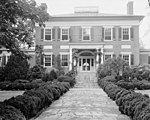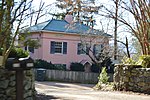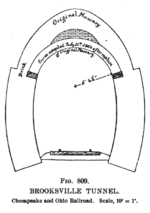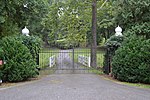Ramsay (Greenwood, Virginia)

Ramsay is a historic estate located at Greenwood in Albemarle County, Virginia. Contributing elements on the estate include the main house (c. 1900), barn (c. 1937), garden (c. 1937), cottage (c. 1950), tenant house and garage (c. 1900), main house garage (c. 1900), potting shed (c. 1937), three greenhouse ruins (c. 1939), smoke house, chicken house, equipment shed, slave cabin ruins (c. 1830 and moved 1930), and a circular turnaround (c. 1930's). The main house is a classical Revival style dwelling begun about 1900 with sympathetic additions dated to 1937, 1947, and the early 1950s. The sympathetic additions and modifications, and barn and garden, were designed by noted Charlottesville architect Milton L. Grigg (1905–1982).It was listed on the National Register of Historic Places in 2009.
Excerpt from the Wikipedia article Ramsay (Greenwood, Virginia) (License: CC BY-SA 3.0, Authors, Images).Ramsay (Greenwood, Virginia)
Pony Express Road,
Geographical coordinates (GPS) Address Nearby Places Show on map
Geographical coordinates (GPS)
| Latitude | Longitude |
|---|---|
| N 38.037222222222 ° | E -78.770277777778 ° |
Address
Pony Express Road
Pony Express Road
22943
Virginia, United States
Open on Google Maps










